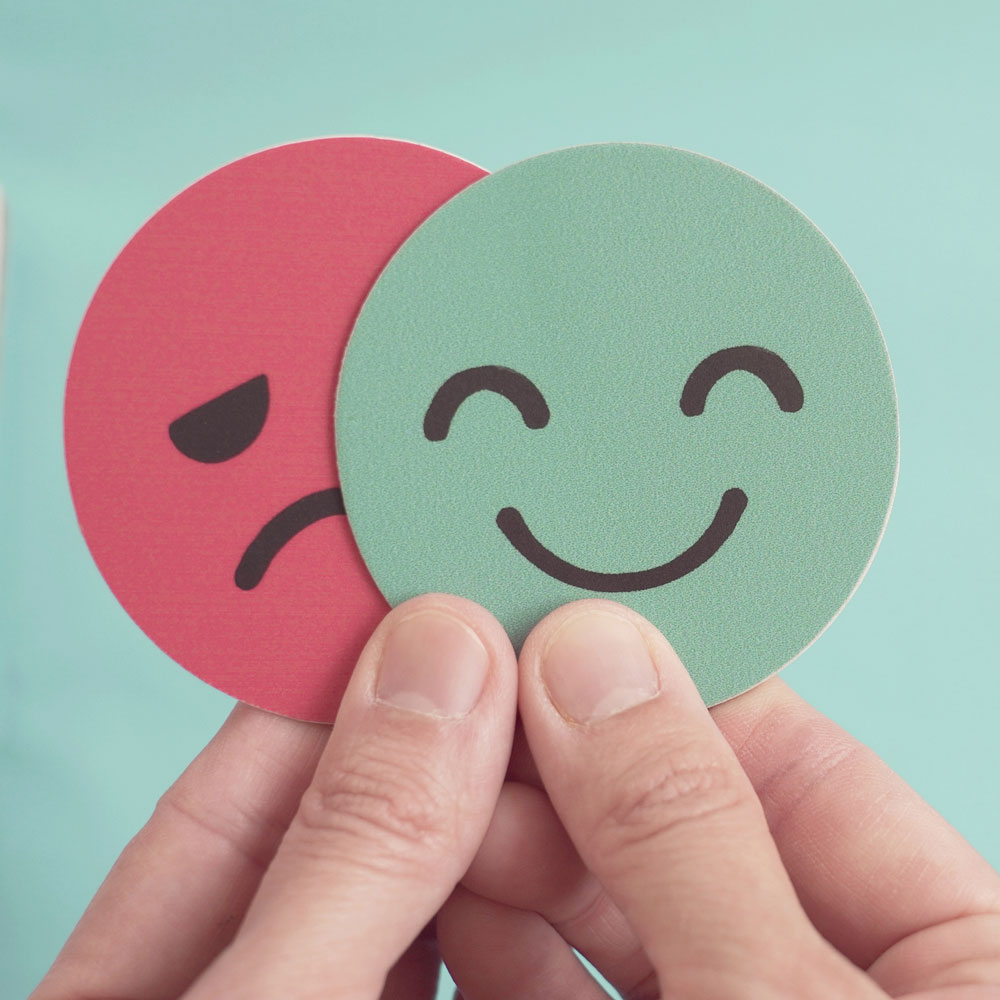By Christa Banister
As we’ve all taken positive steps forward in feeling more comfortable talking about mental health, the learning curve can still feel steep. This is especially true when there are so many important nuances to recognize with something as important as depression.
Like, what’s the difference between bipolar depression versus depression? What about clinical depression, which is also known as severe depression? How do you know which category you fall into? What are the signs?
Adding another layer of confusion is how depression is frequently used as a catch-all term for moments we feel blue. Or if you’ve been in a funk and can’t quite put your finger on why. Making the distinction between mood swings — and what’s a serious mental health condition that inhibits our normal function — is important and may even save a life.
Making the distinction between mood swings — and what’s a serious mental health condition that inhibits our normal function — is important and may even save a life.
Distinguishing Bipolar Depression vs. Depression
Depression is one of the most common mental disorders in the United States, according to VeryWellMind.com.
In 2020, an estimated 21 million adults experienced at least one major depressive episode. That translates to 8.4% of all US adults, according to data from the National Institute of Mental Health.
So, what qualifies as a depressive episode? It’s characterized by having five (or more) symptoms that last most (or all) of the day for two weeks or longer.
These symptoms may include:
- A lack of interest in activities or things you used to enjoy
- Sleeping too much or struggling with insomnia
- A lack of concentration or pervasive restlessness
- Sadness, hopelessness, or feelings of emptiness
- A sense of worthlessness
- Irritability
- A marked change in eating patterns (too much or deprivation)
- Aches and pains and/or headaches
- Dark thoughts
- Suicidal ideation or suicide attempts
When addressing what is the difference between depression and bipolar depression, the distinguishing factor is unpredictability.
Instead of a steady set of depressive episodes, you may alternate between depression, periods with no symptoms at all, and what’s known as hypomania, or mania when you have bipolar disorder.
With bipolar disorder, it’s also possible to have symptoms of depression and mania at the same time. This is what’s referred to as a mixed bipolar state. In the movie Silver Linings Playbook, we see this clearly when Bradley Cooper’s character tries to win back his wife despite having a restraining order.

Some of the common symptoms of hypomania or mania include:
- An immediate need for an increase in high-energy activity
- An underlying feeling of restlessness or thoughts racing through your mind
- Being easily distracted
- Delusions or unrealistic beliefs that contradict reality
- Overly grandiose ideas
- Needing very little sleep
- Feelings of euphoria
- Aggressive behavior
- Temper that flares up quickly
- A high sex drive
- A need for impulsive behavior
When mania is particularly severe, you can experience hallucinations. During manic episodes, poor judgment can lead to alcohol abuse, illegal drug abuse, or sexually transmitted diseases.
Unlike hypomania which is considered less severe and lasts at least four days, mania lasts at least a week. Oftentimes you are unaware of what’s even happening during mania, which can lead to significant problems that can require extended hospitalization.
What Does it Mean to Have Clinical Depression?
Now that we’ve tackled the nuances between bipolar depression versus depression, another depression designation is clinical or severe depression.
Considered the most severe form of depression, research from Mayo Clinic experts indicates that clinical depression isn’t the same level of depression caused by the sudden death of a loved one or stemming from a medical condition.
Rather, clinical depression is something doctors diagnose with the specific criteria referenced in the Diagnostic and Statistical Manual of Mental Disorders (DSM-5) published by the American Psychiatric Association.
With symptoms usually severe enough to cause noticeable struggles in relationships, work, social activities, and normal daily function, clinical depression can affect people of any age, including children and teens.
With symptoms usually severe enough to cause noticeable struggles in relationships, work, social activities, and normal daily function, clinical depression can affect people of any age, including children and teens.
These markers often include:
- Feelings of worthlessness or guilt
- Fixation on past failures or self-blame
- Frequent thoughts of death
- Suicidal ideation or suicide attempts
- Trouble with memory recall, making decisions, concentrating
- Intense feelings of sadness and emptiness
- A loss of hope
- Loss of interest in your favorite hobbies
- Loss of interest in physical connection and sex
- Increased cravings and weight gain or reduced appetite and weight loss
- Slow speaking, thinking, or impaired body movements
- Angry outbursts
- Getting frustrated easily
- Sleep issues
- Unexplained physical maladies such as headaches or back pain
Depression Help is Available
With depression affecting us in so many different forms these days, it can be hard to know for sure what form you have, if any. Sometimes depression can come on as a result of lifestyle fatigue, or it can be mistaken for employee burnout. The best way to know if you have depression or what you can do to feel better is by talking with a mental health professional.
At The Meadows Seasons, your mental health is the priority of our caring, trusted team of experts as you pursue health and healing with our treatment for addiction and co-occurring conditions such as depression, bipolar depression, or clinical depression. Find out more as we come alongside you in taking your first step toward wellness today.
